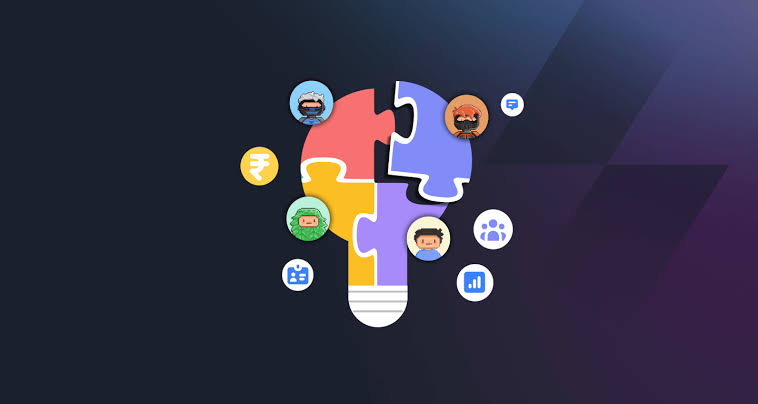Online collaboration tools have become more than just accessories to digital work—they are now the backbone of modern productivity. Whether your team is fully remote, hybrid, or office-based, choosing the right tool can dramatically enhance communication, workflow efficiency, and project outcomes.
As of June 2025, online collaboration has become central to how organizations, educational institutions, freelancers, and creative teams operate globally. With remote work and hybrid models now deeply embedded in professional culture, the demand for reliable, efficient, and secure collaboration tools continues to grow. These platforms are no longer just for video calls or chat—they are ecosystems that combine project management, document editing, file sharing, real-time communication, and task tracking. Below is a comprehensive ranking of the top 10 online collaboration tools of 2025, based on usability, integration capabilities, innovation, and overall effectiveness.
10. monday.com
monday.com has evolved into a robust work operating system that simplifies collaboration across departments and project teams. Known for its highly customizable interface and vibrant dashboards, it helps teams plan, track, and deliver projects with clarity. Users can integrate hundreds of third-party tools, automate workflows, and visualize project timelines using Gantt charts and Kanban boards. With improvements in AI-assisted task suggestions and real-time team collaboration updates, monday.com remains a top choice for teams that need an intuitive and flexible platform.
9. Trello
Trello, originally known for its easy-to-use Kanban-style boards, has expanded its features significantly. In 2025, Trello now includes automation through its Butler feature, team analytics, smart card sorting, and tighter integrations with tools like Slack, Google Drive, and Microsoft Teams. Trello remains popular among creative teams and startups that need a lightweight yet visually organized task management platform. Its mobile optimization and collaborative checklists make it ideal for teams on the go.
8. Zoom Workplace
Zoom is no longer just a video conferencing tool. Zoom Workplace is now a fully integrated platform offering chat, whiteboarding, calendar scheduling, breakout rooms, and third-party app extensions. The platform supports real-time document collaboration and AI-powered meeting summaries, voice transcription, and language translation, enhancing communication across borders. In 2025, Zoom continues to thrive in education, healthcare, and large enterprises due to its reliability and evolving collaboration features.
7. ClickUp
ClickUp markets itself as the all-in-one productivity tool—and rightly so. It combines documents, tasks, chat, time tracking, and goal-setting within a single interface. Users can switch between list views, Gantt charts, mind maps, and workload displays, making it suitable for everything from software development to content planning. ClickUp's real-time collaboration features allow multiple users to edit docs, assign comments, and manage deadlines simultaneously. Recent AI enhancements assist with summarizing updates and suggesting deadlines based on historical trends.
6. Miro
Miro is a visual collaboration platform that enables teams to brainstorm, plan, and create using virtual whiteboards. It has gained immense popularity in design thinking, agile planning, and product development teams. With thousands of templates, sticky notes, wireframes, and a collaborative pen tool, Miro mimics the feel of an in-person creative workshop. In 2025, Miro has integrated more deeply with tools like Notion, Microsoft Teams, and Zoom, allowing synchronous and asynchronous brainstorming regardless of team location.
5. Google Workspace
Google Workspace remains a powerhouse in online collaboration, offering Docs, Sheets, Slides, Meet, and Drive within a unified ecosystem. Its strength lies in real-time multi-user editing and seamless syncing across devices. In 2025, new AI writing and summarizing features have been embedded in Docs and Gmail, making task execution faster. Google Meet now includes live translation, background noise reduction, and smart camera tracking. For businesses already embedded in the Google ecosystem, Workspace continues to be indispensable.
4. Slack
Slack has moved far beyond just being a team messaging app. It is now a centralized collaboration hub with channels for teams, app integrations, video and audio huddles, and document previews. Slack’s advanced search, customizable workflows, and its AI assistant that recommends relevant messages, threads, or files have made it essential for communication-heavy workflows. Its compatibility with thousands of apps—including Salesforce, Trello, and GitHub—makes it especially valuable for cross-functional collaboration.
3. Notion
Notion has grown from a note-taking tool into a comprehensive collaboration and productivity workspace. Teams use it for everything from project management and knowledge bases to publishing documents and brainstorming ideas. Its clean, modular interface allows users to create customizable dashboards, wikis, and timelines. In 2025, Notion’s AI capabilities now offer automated database suggestions, smart summaries, and content analysis. Its seamless team permissions and cross-device functionality make it an excellent choice for growing remote teams.
2. Microsoft Teams
Microsoft Teams has solidified its place as one of the most comprehensive collaboration platforms. Integrated tightly with Microsoft 365, Teams offers chat, meetings, calling, file sharing, and real-time document editing through Word, Excel, and PowerPoint. In 2025, Teams has introduced virtual 3D collaboration spaces, improved noise cancellation, and AI meeting assistants that schedule, transcribe, and summarize discussions. Its enterprise-grade security and scalability make it a staple for large organizations, schools, and government bodies.
1. Asana
At the top of the list is Asana, a project and task management tool that has successfully evolved into a full-fledged collaboration platform. Known for its intuitive design and structured workflows, Asana helps teams manage tasks, goals, timelines, and workloads efficiently. In 2025, Asana’s AI engine, Work Graph, connects tasks, projects, and goals to offer predictive project analytics and smart reassignments. Features like project timelines, workload balancing, and real-time commenting make collaboration seamless. Asana’s clear visualization tools and cross-platform capabilities provide teams with transparency, making it the most well-rounded tool for collaborative work today.
